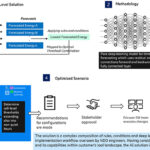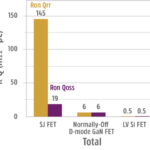Energy is a significant cost in 5G telecom systems, and saving energy is good for the environment and business. In a typical 5G installation, 80% of the energy is consumed by the radio access network (RAN) equipment; the remaining 20% is needed for transport, core network functions like mobility management, routing, security, policy control, charging, […]
FAQ
How is AI enabling the decarbonization of the utility grid?
The electrification of transportation, Industry 4.0, communications, agriculture, and other industries compliments the decarbonization of the utility grid to meaningfully reduce Co2 emissions. Integration of renewable energy sources will be a key to decarbonization of the grid, and artificial intelligence (AI) and machine learning (ML) will be used to enable wider integration of renewable energy. […]
How can AI enhance DVFS in processor power management?
Dynamic voltage and frequency scaling (DVFS) is a common energy-saving technique used in computer processor ICs based on the quadratic relationship between power consumption and operating voltage and the linear relationship between power consumption and frequency. It reacts to changing operating demands on the processor to minimize energy consumption. The addition of artificial intelligence (AI) […]
Power sequencing — options and tradeoffs: part 2
Proper sequencing of the multiple power rails in a system is a critical function and can be accomplished using different approaches. For applications with many rails, complicated sequencing requirements may require many additional components. There are two paths to resolving this advanced sequencing challenge, both offering the needed capabilities. One is based on a user-programmed […]
Power sequencing — options and tradeoffs: part 1
Proper sequencing of the multiple power rails in a system is a critical function and can be accomplished using different approaches. Experienced designers know that one of the riskiest periods in a product’s operating cycle is when power is turned on. This power-up phase is when each of the multiple power rails must come up […]
FAQ on magnetos for power and ignition: part 2
This simple, mechanically driven power source is nearly 200 years old and still has a well-defined, albeit limited, role in today’s systems. Most of the historical and present-day applications for magnetos are for spark-plug ignition systems. This part looks at that aspect in more detail. Q: What’s the structure and operation of a basic magneto-based […]
FAQ on magnetos for power and ignition: part 1
This simple, mechanically driven power source is nearly 200 years old and still has a well-defined, albeit limited, role in today’s systems. What or who is a magneto? No, a “magneto” is not only a powerful mutant that can generate and control magnetic fields; it first appeared in the debut issue of The X-Men in […]
Supervisory ICs tame power-up glitch headaches, Part 2
Power-on glitches and system malfunctions are a special challenge as rail voltages drop, but the right ICs can eliminate the problem. This glitch scenario outlined in the first part of this article becomes a major concern with the trend of low-power devices operating at lower voltages. Consider systems with three logic levels of 3.3 V, […]
Supervisory ICs tame power-up glitch headaches, Part 1
Power-on glitches and system malfunctions are a special challenge as rail voltages drop, but the right ICs eliminate the problem. Experienced engineers know that one of the riskiest times for a system is when power is applied. Depending on time constants and how smoothly and quickly the power rail comes up to nominal, the different […]
MYTH #2: e-mode devices have no Qrr
(Editor’s note: check out the full article, “The fundamental advantages of D-Mode GaN in cascode configuration,” and get the full technical story behind these “busted” myths.) Reality: When switching from reverse conduction to off-state, the reverse recovery charge accounts for not only bipolar transport minority carriers recombination but also the formation of the space-charge region, […]











